
Sir Stanley White and his Bristol Aeroplanes, 1910 - 1918
George Stanley White began his love affair with transport as a keen horseman in the 1890's but his 21st birthday present from his father in 1903 was a Panhard Levassor motor car, which he collected from Paris and drove with much drama home to Bristol. He soon acquired a De Dietrich and many other important cars and his familiarity with the internal combustion engine was considerable by the time he became Managing Director of the aircraft works in 1911.
On his father's death in 1916, his uncle Samuel became Chairman, while he remained as Managing Director. As such he guided the Company through the First and Second World Wars, as well as the traumas of the 1920's. He continued to serve until 1955, when he became joint Deputy Chairman. He never retired, continuing to work every day. He died in 1964, aged 82. ...more
Great designers, engineers & pilots It is impossible in the limited space of a web page to list all the great designers, engineers and pilots who were at one time or another employed at the Bristol Aeroplane Company. During the early period aeronautical experts, whether pilots, designers or engineers, moved freely around Europe and between aviation companies. Many produced wonderful work at Bristol, including George Challenger, Archibald Low, Lt. Charles Burney, Prier, Versepuy, Granseigne, Gordon England, Clifford Tinson and Henri Coanda. ...more
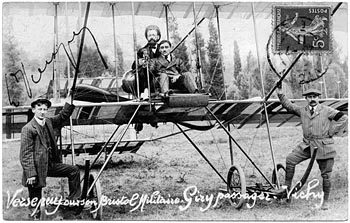 Bristol 'Militaire', Pilot Versepuy download a 750 pixel or 1500pixel image [420Kb]
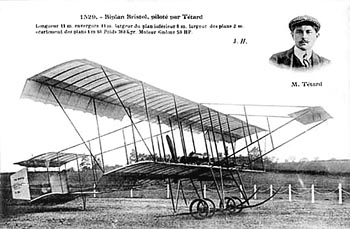 Bristol Boxkite, Pilot Tétard download a 750 pixel image
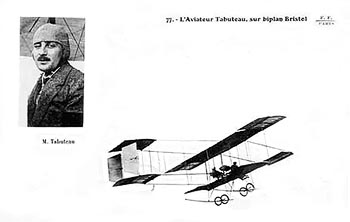 Bristol Boxkite, Pilot Maurice Tabuteau download a 750 pixel image
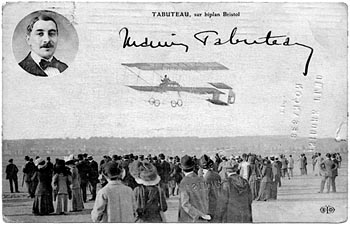 Bristol Boxkite, Pilot Maurice Tabuteau download a 1000 pixel image
Australian Bristol Boxkites
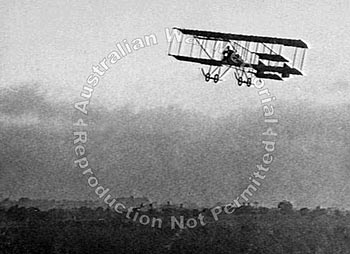 Bristol Boxkite, Pilot J.J Hammond, over Geelong, Victoria, 1911 Australian War Memorial Archives (ID P00588.003)
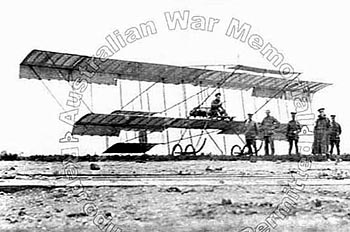 Bristol Boxkite, Pilot J.R. Gordon, Laverton, Victoria, early 1917? Australian War Memorial Archives (ID P00048.013)
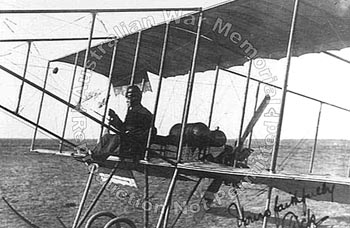 Bristol Boxkite, Pilot R. Williams, Point Cook, Victoria, Nov.,19, 1914 Australian War Memorial Archives (ID TBA)
Bristol Boxkite Survivors : No original aeroplanes survive, though there are a number of skids and spars in a private collection. Three replicas exist, made by G. Miles for the film "Those Magnificent Men and their Flying Machines". They were bought by the Board of the Bristol Aeroplane Company. The flying version (seen above) was presented to the Shuttleworth Trust, Old Warden. One non-flying version was presented to the Bristol Museum and Art Gallery, Queens Rd., Bristol. The other is on display in Oakey, Queensland, Australia [Ed.]
Bristol Tractor Monoplane, 1912
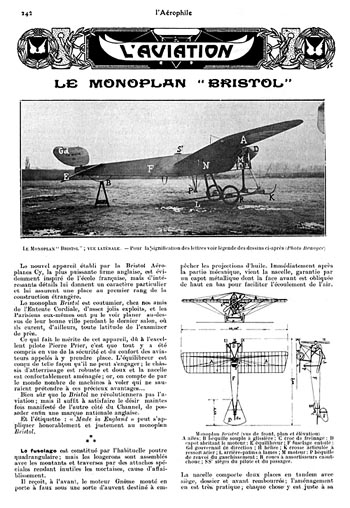 Bristol Tractor Monoplane, 1912 L'Aérophile, p242, June 1, 1912 download a 1000 pixel image
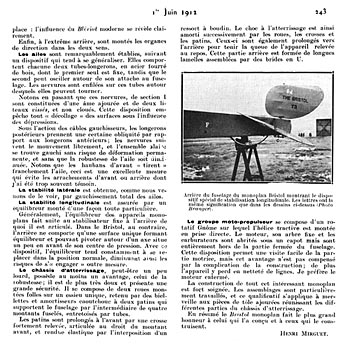 Bristol Tractor Monoplane, 1912 L'Aérophile, p243, June 1, 1912 download a 1000 pixel image
Bristol Tractor Biplane, 1912
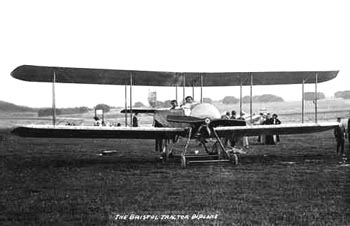 Bristol Tractor Biplane, Amesbury, Salisbury Plain, c.1912 August 1912 - The Military Aeroplane Competition is held at Larkhill, Wilts, to select the most suitable aircraft for use by the RFC. The preferred design is the Bristol Tractor Biplane. [Photo by T. L. Fuller]
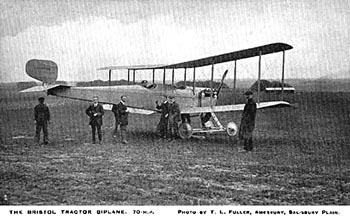 Bristol Tractor Biplane, Amesbury, Salisbury Plain, c.1912 August 1912 - The Military Aeroplane Competition is held at Larkhill, Wilts, to select the most suitable aircraft for use by the RFC. The preferred design is the Bristol Tractor Biplane. download a 1000 pixel image
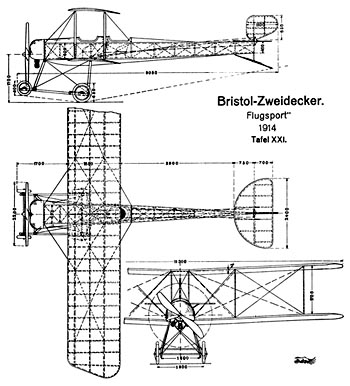 Bristol Tractor Biplane, Amesbury, Salisbury Plain, c.1912 download a 1000 pixel JPEG or 1000 pixel GIF image [330Kb]
Bristol Coanda Monoplane, 1913
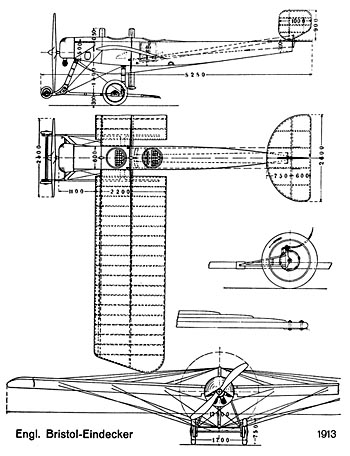 Bristol Coanda Monoplane, 1913 download a 1000 pixel JPEG or 1000 pixel GIF image [275Kb]
Bristol Coanda Survivors : The earliest surviving Bristol airframe is now in the Gianni Caproni Air Museum, Mattarello, Trento, Italy. Actually it was never intended to fly, having been sent from Filton to Caproni as a pattern, when a licence was granted to them in 1912 to build similar aircraft in Italy. It has recently been converted into a complete aeroplane.
Bristol Scout, Bristol 'Baby', 1914 onwards
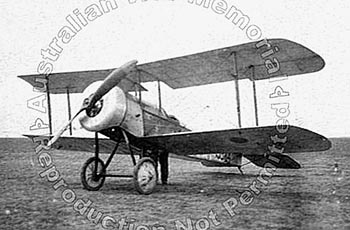 Bristol Scout, 5584, Pilot Lt. H.G. Cornell, 2 Sqn., AFC Lt. H.G. Cornell, was killed in air battle over Dernancourt, Dec. 11, 1917 Australian War Memorial Archives (ID H12729/36)
Bristol Scout D http://www.spartacus.schoolnet.co.uk The Bristol Scout was the first of the planes designed by Frank Barnwell for the British & Colonial Aeroplane Company. Barnwell began work in late 1913 and in February 1914 it reached speeds of 95 mph (153 kph). It was entered for the London-Paris-London race but ran out of fuel on the return trip and was forced down in the Channel. On the outbreak of the First World War, the Royal Flying Corps placed orders for the Bristol Scout. In 1915 Barnwell worked on a new version, the Scout D. The first of these flew with anti-Zeppelin rockets and four small bombs hung on the fuselage next to the pilot. The Scout D was also armed with an unsynchronized Lewis machine-gun. Later this was replaced by a synchronized Vickers.
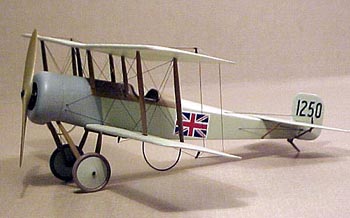 Bristol Scout C?, c.1914
First flown in February 1914, the elegant little Bristol Scout was to serve the RFC in various capacities during the First World War. Used by both the RFC and the RNAS, the Bristol Scout ended its days as a highly prized 'personal' aircraft of instructors. The first Scout to be built in significant numbers was the Scout C, which entered service in early 1915. Ultimately 161 Cs were built. These were followed by 210 Scout Ds. The D was basically similiar to the C with minor changes to the engine mounting, cowl, strut and other fittings. Additionlly many D's also had a heightened rudder.
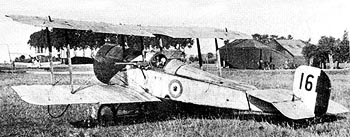 Bristol Scout C, 1611, Pilot Capt. Lanoe George Hawker, 6 Sqn., RFC download a 750 pixel image
The first Victoria Cross won for aerial combat was awarded to Captain Lanoe George Hawker of 6 Sqn. RFC. Flying in Bristol Scout C, No.1611, which was fitted with a Lewis gun angled out from the center-section at a 45°ree; angle to clear the propellor arc, Hawker attacked three German aircraft and downed one in flames on 25 July 1915, with another being forced to land. Adding to this he had downed another 4 days previously.
"The Bristol Scout- so small even an average man has to be eased in with a shoehorn. It is so narrow that my knees prevented any lateral movement of the stick; so short that I can hardly move the rudder. Bristol Scout : The Dangerous Baby http://www.leachintl.com The summer of 1915 was tough on the Tommies dug in along the Belgian front year Ypres. The Germans were peppering the British trenches with deadly accurate shellfire. And the enemy artillery batteries were well hidden. To find something for the British to shoot at, a call went out to the Royal Flying Corps for aerial scouting. One of the favorites of the R.F.C. was the Bristol Scout. Even by 1915 standards, the plane was tiny. Sometimes called the Bristol Baby Biplane, it was a mere eight and a half feet high, 20.8 feet from prop to tail, with a wingspan of only 24.7 feet. But the Bristol Scout, powered by an 80 hp Clerget or Le Rhone rotary engine, could out-maneuver anything the Germans had at that time. Fully loaded, it weighed a little over a thousand pounds and could climb at the rate of 880 feet a minute and reach 10,000 feet in 27-1/2 minutes.
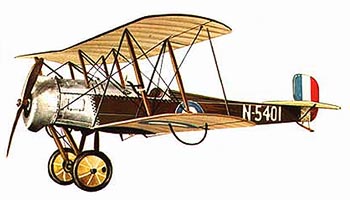 Bristol Scout, 5401 http://www.spartacus.schoolnet.co.uk
Because the little single-seater was used as a spy in the sky, there was no provision for armament. While most German reconnaissance planes carried a machine gun, the Bristol Scout was only occasionally fitted with a Lee-Enfield rifle, minus the stock, attached to the right side of the fuselage. The observer in a German plane could swivel his machine gun and fire in almost any direction. The pilot of a Bristol Scout could fire his rifle only 30 degrees to the side and down from the line of flight - and without a sight! The only other armament was a Mauser pistol in the cockpit and five grenades carried in a rack fixed to the right side of the fuselage. (The Bristol Scout also had the distinction of being the first land plane to take off from an aircraft carrier. On November 3, 1915, it needed only 30 feet to take off. But the plane couldn't land on the carrier. It had to be fitted with air bags to keep it afloat after ditching.) Until the second Summer of World War I, Bristol Scouts and their German counterparts calmly passed each other on their reconnaissance missions. Occasionally, a pilot or observer of one plane would pop off at another with a rifle, pistol or shotgun. But it wasn't until someone realized that these aerial onlookers posed a real threat that air-to-air combat began in earnest. One of the someones was Captain Lanoe G. Hawker, twenty-five-year-old pilot of a Bristol Scout attached to 6 Sqn of the Royal Flying Corps in Abeele, Belgium. Already the holder of the DSO for his single-handed raid in a B.E. 2C on the Zeppelin sheds at Gontrode, he was to become even more famous in a little Bristol Scout. It was July 25, 1915. Flying a routine patrol over the Ypres salient, Hawker spotted a German two-seater. Ignoring the enemy's machine gun, he attacked and sent the plane scurrying for home. Twenty minutes later, over the Houthulst Forest, he came upon another two-seater, aimed his Lee-Enfield rifle as best he could, hit the plane's engine and forced the German to the ground. He climbed to 12,000 feet. There was a two-seater Albatros below him. Hawker dived down out of the sun, his simple, clip-fed carbine cocked and ready. One man and a rifle against two men and a machine gun. Hawker won. As the Albatros went down in smoke and flame, it flipped over, dropping the observer like a bomb. On the dead man's clothing, British soldiers found the positions of four German batteries, one of which had escaped the prying search of aerial pilots for many weeks. For his spectacular feat against almost impossible odds, Captain Hawker won the Victoria Cross - the first time England's highest honor was given for air-to-air combat. Hawker played a leading role in one more famous air battle of World War I - a 20-minute duel to the death with the famous Baron von Richthofen, "The Red Knight of Germany." That was November 23, 1916. The last day of his life.
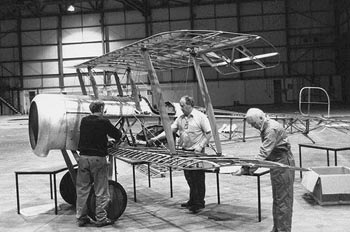 Bristol Scout under restoration download a 750 pixel image The Bristol Aero Collection at Kemble heritage airfield, Cirencester, England
Bristol Scout D http://www.wwiaviation.com One of the first aircraft produced in large numbers for Britain was the Bristol Scout. Based upon Frank Barnwell's pre-war racing plane, it was considered fast and maneuverable when it entered service. The Scout was the first attempt by the Royal Flying Corps to develop a true fighter. Initially unarmed, Lanoe Hawker devised a method for mounting a Lewis gun to the side of the aircraft. In March 1916, the Scout D became the first British fighter to be armed with a synchronized machine gun. Soon outdated by more efficient designs, it was withdrawn from service in the summer of 1916 and used as a trainer.
Manufacturer: The British & Colonial Aeroplane Company, Ltd.
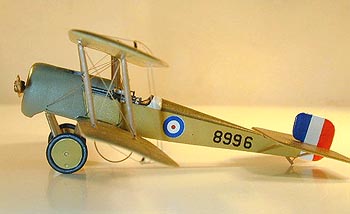 Bristol Scout D, 8996, (model), Pilot FSL G.T. Bysshe, RNAS "C" Flight, 2 Wing, Imbros, December 1916 download a 750 pixel image
Designed by Frank Barnwell and Harry Busteed, 374 Bristol Scouts were built, 210 being "D" models. The "D" had an enlarged tailplane and elevators were standardized and rudder area was also increased. The "D" was delivered into service starting in mid-Feb 1916. The Bristol saw service in most theaters of the war, always in small numbers, always ineffectively or dangerously armed. No attempt was made to synchronize the Vickers guns to the Bristols despite the use of the Scarff-Dibovsky gear since the spring of 1916.
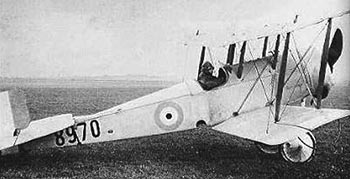 Bristol Scout, 8970
Bristol Scout Survivors : No original survives, but a fine replica Scout D, built by Leo Opdyke is currently on loan by the White family to the R.N.A.S. Museum, Yeovilton, Somerset. There are other replicas including one apparently owned by the Bristol Heritage Collection in America and another at Duxford.
Bristol M1 monoplane, 1916
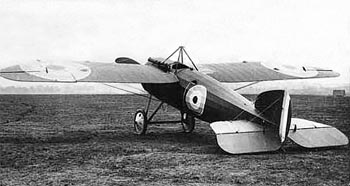 Bristol M.1C
Bristol M.1C Monoplane http://www.shuttleworth.org By 1916 the need for a new high performance fighter with reliable armament was obvious as casualties among pilots and observers was high. The British and Colonial Aircraft Company (Bristol) produced the M.1C monoplane despite opposition from the Air Ministry who were in favour of biplanes and distrusted monoplanes. The new fighter was equipped with the already successful synchronised firing mechanism that allowed the guns to fire through the propeller arc.
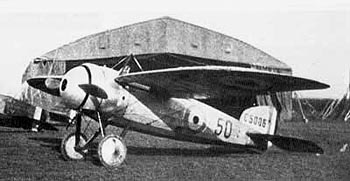 Bristol M.1C
At the roots of the wings, there were areas that were areas that were left uncovered to give the pilot a clear downward view. To give the M.1C a good streamlined shape, it was provided with a large hemispherical spinner covering most of the rotary engine. The Air Ministry ordered 130 aircraft, which entered service during 1916-17.
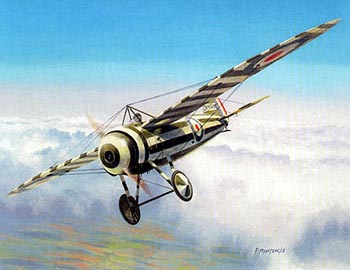 Bristol M.1C (Trainer)
Although the M.1C had a superior performance to many of the current RFC front line types, it was not used operationally over the Western Front. The type was used extensively in Flying Training Stations, where, due to its excellent performance they were often the personal mounts of senior officers with striking colour schemes.
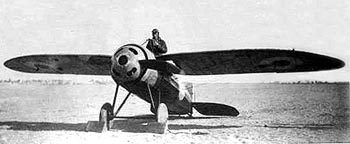 Bristol M.1C
Five squadrons were equipped for active service with the M1.C in Salonika and operated against the Turks and Bulgars. When the RFC was reformed as the RAF in 1918, the M.1C became the first monoplane fighter to be operated by the RAF - a very early predecessor to the Spitfire and Hurricane.
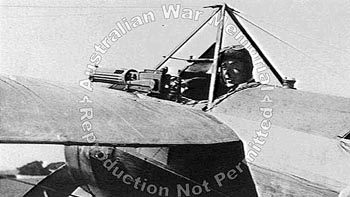 Bristol M.1C, RFC, Middle East 1917, MG detail Australian War Memorial Archives (ID P01034.039) download a 750 pixel image
The Collections Bristol M.1C is a replica built by the Northern Aeroplane Workshops using the original plans. It was constructed over the period between 1980 and October 1997 when it was delivered to the Collection. It is painted in the colours of 72 Squadron operating in Mesopotamia during 1918. G-BWJM first flew on 25th September 2000 after paperwork and technical difficulties had delayed the first flight. This year will be the first year of display flying.
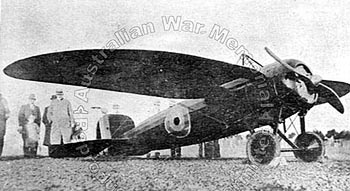 Bristol M.1C Australian War Memorial Archives (ID TBA)
Yorke Peninsula The Windjammer Coast http://www.finalword.com On the central part of the Peninsula is the world's barley capital Minlaton, a shady town with fauna park, a vintage tractor and engine collection, gallery and National Trust Museum which features memorabilia of the famed aviator Captain Harry Butler. His 1915 Bristol monoplane, The Red Devil, is on separate, permanent display and is believed to be the only one of its type in the world. Minlaton is close to Port Rickaby, good for swimming and boating, Barkers Rocks for rock fishing, and Bluff Beach which has prolific birdlife
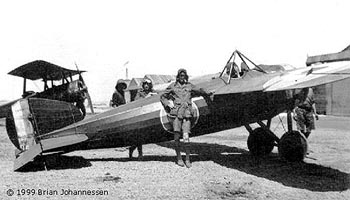 Bristol M.1C http://www.kw.igs.net/~brianj/egypt/aircraft/bristol2.jpg download a 750 pixel image
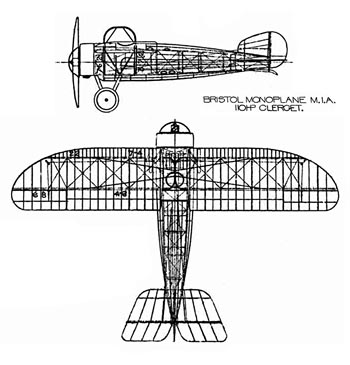 Bristol M.1C download a 750 pixel image
Bristol M.1 Survivors : An original, known as "The Red Devil" is displayed in the Harry Butler Museum, Minlaton, S. Australia. A replica is displayed in the R.A.F. Museum, Hendon, a flying replica is in the Shuttleworth Trust, Old Warden Bedfordshire.
Bristol Fighter, 'Brisfit', F.2, 1916
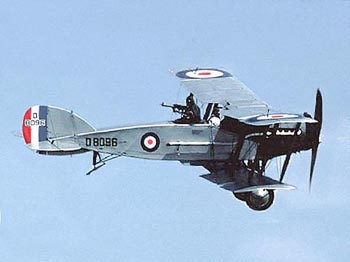 Bristol Fighter No. 8096
Bristol Fighter, Bristol F.2, 'Brisfit' http://www.planesoffame.org Designed in 1916 as a reconnaissance aircraft, the Bristol F.2 was an excellent two-seat fighter, which served in various roles with the Royal Air Force until the mid-Thirties. The 'Brisfit', as it was nicknamed, was designed to replace the B.E.2, a widely used, but woefully inadequate aircraft. The B.E.2 was inherently stable, a useful attribute for a reconnaissance aircraft, but which made it a sitting duck for enemy fighters.
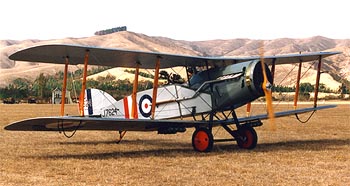 Bristol Fighter NZ Warbirds download a 750 pixel image
The Bristol was powered by a Rolls-Royce Falcon engine, which together with its sleek airframe gave it the fighter-like top speed of 125 mph. It also had great maneuverability and the type was considered good enough to be a fighter. The Bristol Fighter went into service with the RAF in February 1917, but was not an immediate success due to tactical errors. Pilots flew the airplane in rigid formation, like other two-seaters, so that the rear gunners could concentrate their fire, but this enabled enemy fighters to easily shoot them down. Once pilots began to take advantage of the type's speed and agility, the Brisfit soon became one of the most effective fighter aircraft of World War One. Following the War, the F.2 had a successful career as an Army Cooperation and 'Imperial Policing Aeroplane'. In the latter role, the Brisfit was used to help quell local uprisings in the then-British colonies of Persia, Iraq and India. Equipped with underwing racks, the F.2 could drop leaflets, or on more stubborn resistance, 200 pounds of bombs.
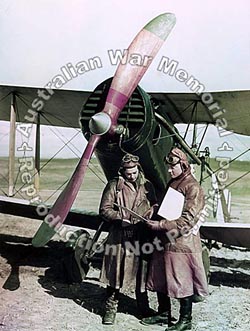 Bristol F2B, 1 Sqn, AFC, c.1918 The observer (right) is Lt. James Hamilton Traill. The pilot (left) is either Lt. Leonard Malcolm Sumner Potts or Lt. G. C. Peters, with whom Traill usually flew
Australian War Memorial Archives (ID P01034_039) download a 500 pixel image
Profiles of Australian Flying Corps Aircraft http://www.australianflyingcorps.org listing in part ...Bristol Fighters flown by the AFC
A7194 of Lt. L.M.S Potts and Lt. F. Hancock, 1 Sqn AFC. 1918. 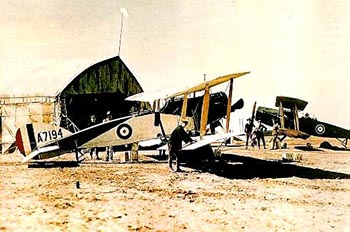 Bristol F2B, most possibly 1 Sqn, AFC, c.1918 also most possibly a colour photo by Frank Hurley. With the very small? number of colour photos taken around this is more than likely from the same group of images as above which is confirmed as by Hurley
Bristol Fighter, 'Brisfit', F.2B http://www.fiddlersgreen.net which says in part... "In 1917, the Bristol Fighter was a very misunderstood aeroplane. On 5 April, six Bristol two-seater fighters of No 48 Squadron took off on the aircraft's first operational mission. Only two returned. Near Douai the Bristol Fighters had been attacked by five Albatros DIlls, the aircraft they had been designed to fight against. But conventional two-seater tactics were hopelessly inadequate against the hard-hitting and highly maneuverable Albatros scouts. These dictated that the observer's Scarff-mounted Lewis gun was the main armament, with the fixed forward-firing Vickers used by the pilot as secondary or emergency armament." "The Bristol F.2 was designed by Captain Frank Barnwell of the British & Colonial Aeroplane Company. His aim had been to replace the aging BE.2s that were such easy targets for the German fighters. Barnwell's early design in March I 9 I 6 would have been powered by the I 2Ohp Beardmore. However, at that time Rolls-Royce brought out the much more powerful Falcon I, which could develop I 9Ohp. Barnwell recognised that this extra power would transform his design from a reconnaissance aircraft to a two-seater fighter." ...more
IN March, 1916, Captain Barnwell started work on the design of a two-seat tractor biplane which was intended to be a replacement for the B.E. two-seaters as a reconnaissance aircraft. Additionally, the new type was to be capable of carrying out fighting patrols. The designation Bristol R.2A was applied to this design, which was based on the 120 h.p. Beardmore engine. Dual controls were to be fitted, and a camera and wireless were included in the machine's equipment. The wings were of 40 ft 8 in. span, and the fuselage was to have been mounted mid-way between them in order to bring the pilot's eyes level with the upper wing. The designed armament consisted of two Lewis guns: one was fixed on the starboard upper longeron and was synchronized to fire forward through the airscrew, while the observer had a Scarff ring-mounting for his gun....more
Further Reading
Sir George White made a fortune in Bristol by bringing trams to the city, but in 1910 he decided to start an aeroplane manufacturing company. At the very least, people would ride on his trams to see his aircraft fly. From the start he was not a starry eyed aviation enthusiast - it is doubtful whether he actually ever flew - and realised that building aircraft would only be viable if he could sell them at a profit. He started by acquiring the British manufacturing rights for Zodiac models designed by Gabriel Voisin. They didn't work very well, so he pirated a Farman biplane design (the Boxkite). When Farman threatened to sue for breach of copyright, he showed that he had improved the plans so much as to fundamentally alter the design, and the case was dropped. He had two good ideas - he started flying schools for potential customers, as did Bleriot - and sited one of them on Salisbury Plain where the ever conservative Army would have to watch the development flying. He delivered 260 aircraft from 1910 - 1914. ...more
Stonehenge: Britain's joint first airport Note: The 'next page' link is not functional on Page 1 (above) go to the second and third page here
Early Aviation Photographs by T.L. Fuller
In October 1910 the Grand Palais on the Champs-Elysees in Paris was hosting the 2nd International Aeronautical Exhibition. The most recent products of aviation were exposed. Many people visited the exhibition, some because of pure curiosity, attracted by the miricle of flight, others because they were particularly interested in a specific machine. The most interesting machine, which attracted lots of people, was a red airplane which was missing the propeller; beside it, on a metallic shell, was written: COANDA-1910
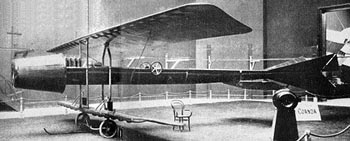 Coanda's "Jet" Biplane of 1910
It was a double-wing, one-seat plane equipped with a reactive engine. The main characteristics were: Span: 10.30 mThe news concerning the airplane's construction were mainly the following : For the first time the main stubs of wings were made of steel instead of wood. The wings were for the first time equipped with mobile surfaces placed ahead of wing to increase lift (*these are mobile surfaces attached to the wing, which have the role to delay the separation of the boundary layer, thus increasing the critical flight incidence and the maximum lifting coefficient; in Romanian it is called volet - e.g volet Fowler, Taghi, Kruger etc.*).Paul Painleve (1863-1933), Prof. at Sorbone, one of the pioneers of Flight Mechanics, who also flew with Wilbur Wright and Henri Farman even in 1908 - Sextrieux and Gustave Eiffel - 1832-1923, a pioneer of experimental aerodynamics, his first experiences being carried out from the tower which bears his name - were particularly interested in Coanda's machine. However they realized that the hour of the reactive airplane had not come yet (Eiffel: 'This boy should have been born 30 years later.'). The most interesting part of Coanda's plane was the propulsion system, a real revolution in the construction of airplanes engines, that would have to constitute the solution in the future.
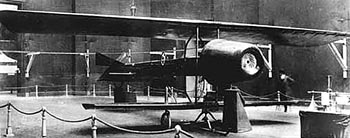 Coanda's "Jet" Biplane of 1910
The "air-reactive engine", invented and built for the first time by Henri Coanda, composed of a piston-engine with four cylinders, cooled with water; it developed 50 HP (Horse-Power) at 1000 rotations/minute. This piston-engine was connected to a rod which rotated the rotation multiplier; the movement was transmitted to the compressor which gained a rotation speed of 4000 rot./min.. In front of the compressor was placed the obturator - a device very similar to that of a photo-camera; this device could be controlled by the pilot such that the quantity of air that entered the compressor could be regulated. The air entered the burning rooms, (that had a ring-like section and were placed on both sides of the fuselage), from which, through some tubes, burned gases of the engine were evacuated and the propulsion force was generated. The propulsion force at sea level obtained with this engine was 220 kgf, much larger than that obtained if the piston-engine would have been acted by a propeller. Many visitors were suspicious about the possibility that this machine could take off since it was missing the propeller. They had never seen such a strange flying machine and never heard about an airplane without a propeller.
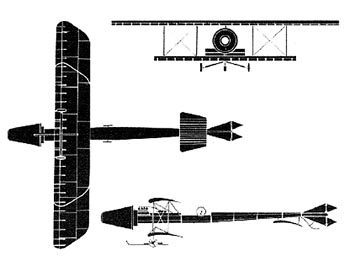 Coanda's "Jet" Biplane of 1910
After the exhibition closed its doors, on December 16, 1910, Henri Coanda transported his airplane at Issy-les-Moulineaux. Here he only intended to verify the engine, not to fly. So Coanda got into his machine, and after several minutes of warming up, pushed the buttons that commanded the obturator and the rotation speed of the engine. The airplane began to move faster and faster, and flames and fume could be seen along the fuselage getting out from the engine. After a very short time, before Coanda could realize what was going on, the airplane was in the air. Impressed by the flames and worried about the fact that he had never piloted an airplane by then (only planors), Coanda lost the control of his machine which began to loose speed and height. In a short time it stroke the ground and began to burn. This first flight was described by Coanda in 1964 as follows :
"The machine gained height much faster than I thought; it was not my fault, but after a while it entered a glissade, stroke the ground and burned completely. I was very lucky I was not tied on the chair, such that I was pushed out when the airplane stroke the ground; otherwise I would have burned with it."This attempt constitutes the first flight of an airplane equiped with an air-reactive engine, the first reactive flight of an airplane in the world. But lacking the financial support Coanda could not improve his invention such that a second reactive airplane made by Coanda could not be seen flying again. So 30 years before Heinkel, Campini and Whittle, Coanda built and flew the first reactive airplane.
Some important aviation magazines mentioned the event latter (...) : The Aviation Magazine no. 160, 1955, included an article by Andre Bie called 'The first turbo-propelled airplane in the world, which describes Coanda's plane. Green and Cross, in their book The Jet Aircraft of the World, London 1955, also mentioned 'Coanda-1910' airplane.
The magazine Flying in September 1956, included the article 'He flew in 1910' by Rene Aubrey, which describes Coanda's airplane and his flight. Main reference: Gheorghiu, Constantin C., Romanian Inventions and Prioritites in Aviation, Ed. Albatros, Bucharest, 1979 (in Romanian).
This article was posted in the Romanian mailing list
http://www.deltawing.go.ro
Maurice Tabuteau was born in Paris in 1884 and received his flying licence (No. 128) in 1910. He was a highly successful professional aviator in the years 1910-1912, which followed Bleriot's channel crossing, and lead to Garros' epic crossing of the Mediterranean. In those few short years, aviation distance, speed and altitude records literally exploded. Tabuteau won the Michelin cup in 1910, following Wilbur Wright in 1908, and Henri Farman in 1909. He also won the Deutsch prize and many others.
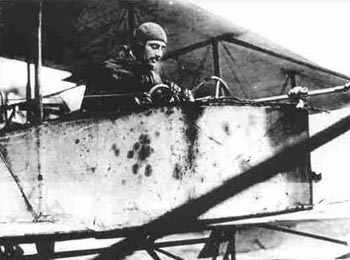 Maurice Tabuteau, c.1911 Collection of Denys Tabuteau
Many fascinating documents,letters, photos and maps from that period, and an autobiography unknown even to his relatives have been put together, a waiting publication including many letters from Farman, Morane, Saulnier, Sir George White, U.S. Air Force Colonel Muhlenberger, Ernest Archdeacon, Poet Edmond Rostand, the duke of Beaufort and others.
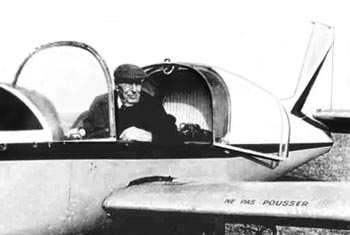 Maurice Tabuteau in later years, MUCH later years, 1961 Collection of Denys Tabuteau
Please contact via E-mail : denitab@wanadoo.fr or Write to 21 allee Degas, Dammarie-lès-Lys 77190, France see more about this project on the Maurice Tabuteau website
http://members.tripod.com
|
© Copyright 1999-2002 CTIE - All Rights Reserved - Caution |
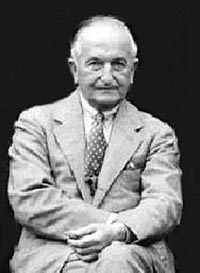 Sir G. Stanley White Bt., (1882 - 1964)
Sir G. Stanley White Bt., (1882 - 1964)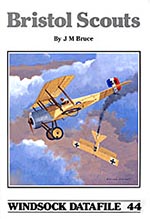
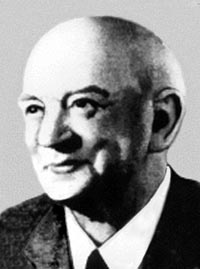
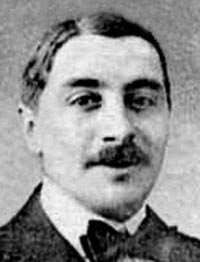 Maurice Tabuteau (1884 - 1976)
Maurice Tabuteau (1884 - 1976)